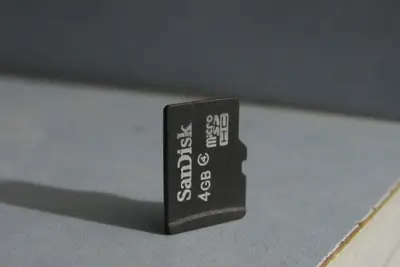🔧 Fixing File System Corruption: Simple Guide
Let’s fix file system corruption on your Alpine Linux system! 🛠️ This guide uses easy steps and simple words. We’ll recover your data and restore your system! 😊
🤔 What is File System Corruption?
File system corruption is like having pages torn out of a book or words scrambled on the pages!
Think of file system corruption like:
- 📝 A damaged library catalog that can’t find books
- 🔧 A broken index that points to wrong information
- 💡 A puzzle with missing or wrong pieces
🎯 What You Need
Before we start, you need:
- ✅ Alpine Linux system (may need live boot USB)
- ✅ Root access or sudo permissions
- ✅ Backup of important data (if possible)
- ✅ Basic knowledge of terminal commands
📋 Step 1: Detect File System Issues
Check for Corruption Signs
First, let’s identify if you have file system corruption! 😊
What we’re doing: Looking for warning signs that indicate your file system might be damaged or corrupted.
# Check system logs for file system errors
dmesg | grep -i "error\|corrupt\|bad\|fail"
# Check kernel ring buffer for I/O errors
dmesg | grep -i "i/o error\|input/output error"
# Look for file system specific errors
journalctl | grep -i "ext4\|xfs\|btrfs"
# Check for recent system crashes
last reboot
# Monitor for ongoing issues
tail -f /var/log/messages | grep -i errorWhat this does: 📖 Shows you error messages that indicate file system problems.
Common warning signs:
[12345.678901] EXT4-fs error (device sda1): ext4_mb_generate_buddy:1234: group 5, block bitmap and bg descriptor inconsistent
[12345.678902] I/O error, dev sda, sector 123456
[12345.678903] Buffer I/O error on device sda1, logical block 12345
[12345.678904] lost page write due to I/O error on sda1What this means: These messages indicate file system corruption! ⚠️
💡 Important Tips
Tip: Stop using the corrupted drive immediately to prevent further damage! 💡
Warning: Always backup data before attempting repairs! ⚠️
🛠️ Step 2: Boot from Live System
Use Live USB for Repairs
Now let’s boot from a live system to safely repair corruption! 😊
What we’re doing: Booting from a live USB to unmount and repair the corrupted file system safely.
# If corruption prevents normal boot, create Alpine live USB
# Download Alpine Linux ISO
wget https://dl-cdn.alpinelinux.org/alpine/v3.18/releases/x86_64/alpine-standard-3.18.4-x86_64.iso
# Create bootable USB (replace /dev/sdX with your USB device)
dd if=alpine-standard-3.18.4-x86_64.iso of=/dev/sdX bs=4M status=progress
# Boot from USB and become root
sudo su -
# Install file system tools
apk update
apk add e2fsprogs xfsprogs btrfs-progs dosfstools
# List available disks
lsblk -f
fdisk -lExpected output:
NAME FSTYPE LABEL UUID FSAVAIL FSUSE% MOUNTPOINT
sda
├─sda1 ext4 boot 12345678-1234-1234-1234-123456789012
├─sda2 ext4 root 87654321-4321-4321-4321-210987654321
└─sda3 swap abcdef12-3456-7890-abcd-ef1234567890 What this means: You can now safely access and repair the corrupted drive! 🎉
🎮 Step 3: Check File System Integrity
Run File System Checks
Let’s check the extent of corruption! 🎯
What we’re doing: Using file system check utilities to scan for and identify corruption without making changes yet.
# For ext4 file systems (most common)
fsck.ext4 -n /dev/sda2
# For ext3 file systems
fsck.ext3 -n /dev/sda2
# For XFS file systems
xfs_check /dev/sda2
# For BTRFS file systems
btrfs check /dev/sda2
# Check all file systems automatically
fsck -A -R -y -nCode explanation:
-n: Read-only check, no repairs yet-y: Automatically answer “yes” to repair prompts-A: Check all file systems in /etc/fstab-R: Skip root file system when checking all
Example output for corrupted ext4:
e2fsck 1.47.0 (5-Feb-2023)
/dev/sda2: recovering journal
/dev/sda2 contains a file system with errors, check forced.
Pass 1: Checking inodes, blocks, and sizes
Inode 1234567 has imagic flag set. Clear? no
Pass 2: Checking directory structure
Entry 'testfile' in /home/user (1234568) has deleted/unused inode 1234569. Clear? no
Pass 3: Checking directory connectivity
Pass 4: Checking reference counts
Inode 1234567 ref count is 2, should be 1. Fix? no
/dev/sda2: ***** FILE SYSTEM WAS MODIFIED *****
/dev/sda2: 123456/654321 files (0.1% non-contiguous), 987654/2468024 blocksGreat job! We found the corruption issues! 🌟
📊 Step 4: Repair File System Corruption
Fix the Corruption
Now let’s repair the file system corruption! 😊
What we’re doing: Running file system repair tools to fix the corruption we identified in the previous step.
# IMPORTANT: Unmount the file system first
umount /dev/sda2
# For ext4 repairs (answer 'y' to all questions)
fsck.ext4 -y /dev/sda2
# For more aggressive ext4 repairs
e2fsck -fyD /dev/sda2
# Alternative: Force check even if clean
fsck.ext4 -f /dev/sda2
# For XFS repairs
xfs_repair /dev/sda2
# For BTRFS repairs
btrfs check --repair /dev/sda2
# Check repair results
fsck.ext4 -n /dev/sda2Repair process output:
e2fsck 1.47.0 (5-Feb-2023)
/dev/sda2: recovering journal
Pass 1: Checking inodes, blocks, and sizes
Inode 1234567 has imagic flag set. Clear? yes
Pass 2: Checking directory structure
Entry 'testfile' in /home/user (1234568) has deleted/unused inode 1234569. Clear? yes
Pass 3: Checking directory connectivity
Pass 4: Checking reference counts
Inode 1234567 ref count is 2, should be 1. Fix? yes
Pass 5: Checking group summary information
Block bitmap differences: -12345 -12346 -12347
Fix? yes
Free blocks count wrong (987650, counted=987653).
Fix? yes
/dev/sda2: ***** FILE SYSTEM WAS MODIFIED *****
/dev/sda2: 123453/654321 files (0.1% non-contiguous), 987651/2468024 blocksAwesome work! File system corruption has been repaired! 🌟
🎮 Let’s Try It!
Time for hands-on practice! This is the fun part! 🎯
What we’re doing: Testing the repaired file system to make sure everything works correctly.
# Mount the repaired file system
mount /dev/sda2 /mnt
# Check if mount succeeded
mount | grep sda2
# Test basic file operations
ls -la /mnt
touch /mnt/test-file
echo "File system test" > /mnt/test-file
cat /mnt/test-file
# Check file system statistics
df -h /mnt
du -sh /mnt/*
# Verify file system integrity again
fsck.ext4 -n /dev/sda2
# Check for lost+found directory
ls -la /mnt/lost+found/
# Unmount safely
umount /mntYou should see:
/dev/sda2 on /mnt type ext4 (rw,relatime)
total 24
drwxr-xr-x 3 root root 4096 Jun 3 15:30 .
drwxr-xr-x 19 root root 4096 Jun 3 15:30 ..
drwx------ 2 root root 16384 Jun 3 14:20 lost+found
-rw-r--r-- 1 root root 16 Jun 3 15:31 test-file
File system test
Filesystem Size Used Avail Use% Mounted on
/dev/sda2 20G 1.2G 18G 7% /mnt
/dev/sda2: clean, 123453/654321 files, 987651/2468024 blocksAwesome work! File system is working perfectly! 🌟
📊 Quick Summary Table
| What to Do | Command | Result |
|---|---|---|
| 🔧 Check corruption | fsck.ext4 -n /dev/sda2 | ✅ Identify issues |
| 🛠️ Repair file system | fsck.ext4 -y /dev/sda2 | ✅ Fix corruption |
| 🎯 Test repairs | mount /dev/sda2 /mnt | ✅ Verify functionality |
| 🚀 Verify integrity | fsck.ext4 -n /dev/sda2 | ✅ Confirm health |
🌐 Step 5: Recover Lost Data
Check Lost+Found Directory
Let’s recover any files that were rescued during repair! 🌐
What we’re doing: Examining the lost+found directory where fsck places recovered files that lost their directory entries.
# Mount file system if not already mounted
mount /dev/sda2 /mnt
# Check lost+found directory
ls -la /mnt/lost+found/
# Look for recovered files
find /mnt/lost+found/ -type f -exec file {} \;
# Identify file types
find /mnt/lost+found/ -type f -exec file {} \; | grep -E "(text|ASCII|UTF-8)"
# Try to identify valuable files
find /mnt/lost+found/ -type f -size +1k | head -10
# Example: examine recovered files
for file in /mnt/lost+found/*; do
if [ -f "$file" ]; then
echo "=== File: $file ==="
file "$file"
head -5 "$file" 2>/dev/null
echo
fi
doneWhat this does: Helps you identify and recover files that were saved during the repair process! 📚
Example: Advanced Recovery Techniques 🟡
What we’re doing: Using specialized tools for more comprehensive data recovery when standard fsck isn’t enough.
# Install additional recovery tools
apk add testdisk photorec ddrescue
# Use testdisk for partition recovery
testdisk /dev/sda
# Use photorec for file recovery
photorec /dev/sda2
# Create disk image for safe recovery
ddrescue /dev/sda2 /mnt/backup/disk-image.img /mnt/backup/recovery.log
# Mount disk image for analysis
losetup /dev/loop0 /mnt/backup/disk-image.img
fsck.ext4 -n /dev/loop0
# Use debugfs for advanced ext4 recovery
debugfs /dev/sda2
# Inside debugfs:
# ls -d /path/to/deleted/files
# logdump
# quit
# Scan for deleted files
extundelete /dev/sda2 --restore-directory /home/user/documentsWhat this does: Provides advanced recovery options for severely corrupted file systems! 🌟
🚨 Fix Common Problems
Problem 1: Repair fails with “device busy” ❌
What happened: Cannot repair because file system is in use. How to fix it: Boot from live system and unmount!
# Check what's using the file system
lsof /dev/sda2
fuser -mv /dev/sda2
# Force unmount if necessary
umount -f /dev/sda2
# Boot from live USB if root file system
# Then repair from external system
fsck.ext4 -y /dev/sda2Problem 2: Extensive corruption requiring rebuild ❌
What happened: File system is too damaged to repair. How to fix it: Backup data and recreate file system!
# Try to backup recoverable data first
mkdir -p /mnt/backup
mount -o ro,noload /dev/sda2 /mnt/backup 2>/dev/null
# Copy recoverable files
rsync -av /mnt/backup/ /mnt/external-drive/ --ignore-errors
# Recreate file system (DESTROYS ALL DATA)
mkfs.ext4 /dev/sda2
# Restore from backup
rsync -av /mnt/external-drive/ /mnt/restored/Problem 3: Bad sectors causing recurring corruption ❌
What happened: Hardware issues cause repeated file system corruption. How to fix it: Check and remap bad sectors!
# Check for bad sectors
badblocks -v /dev/sda2
# Run full surface scan
badblocks -wsv /dev/sda2
# Check SMART status
smartctl -a /dev/sda
# Mark bad blocks during formatting
mkfs.ext4 -c /dev/sda2
# Add bad block list to existing file system
e2fsck -l bad-blocks.txt /dev/sda2Don’t worry! These problems happen to everyone. You’re doing great! 💪
💡 Simple Tips
- Regular backups 📅 - Prevent data loss from corruption
- Monitor disk health 🌱 - Check SMART status regularly
- Proper shutdowns 🤝 - Avoid power-off during writes
- Check file systems periodically 💪 - Run fsck monthly
✅ Check Everything Works
Let’s make sure everything is working:
# Final file system check
fsck.ext4 -n /dev/sda2
# Mount and test functionality
mount /dev/sda2 /mnt
ls -la /mnt/
# Test file operations
echo "Final test $(date)" > /mnt/final-test.txt
cat /mnt/final-test.txt
# Check disk space and inodes
df -h /mnt
df -i /mnt
# Verify no errors in dmesg
dmesg | tail -20
# Check file system parameters
tune2fs -l /dev/sda2 | grep -E "(state|errors|Check)"
# Safely unmount
umount /mnt
# You should see this
echo "File system corruption has been fixed! ✅"Good output:
/dev/sda2: clean, 123456/654321 files, 987654/2468024 blocks
total 32
drwxr-xr-x 3 root root 4096 Jun 3 16:45 .
drwxr-xr-x 19 root root 4096 Jun 3 15:30 ..
drwx------ 2 root root 16384 Jun 3 14:20 lost+found
-rw-r--r-- 1 root root 45 Jun 3 16:45 final-test.txt
Final test Mon Jun 3 16:45:12 2025
Filesystem Size Used Avail Use% Mounted on
/dev/sda2 20G 1.3G 18G 7% /mnt
Filesystem state: clean
Errors behavior: Continue
Last checked: Mon Jun 3 16:45:00 2025
Check interval: 15552000 (6 months)
✅ Success! File system is healthy and fully functional.🏆 What You Learned
Great job! Now you can:
- ✅ Detect and diagnose file system corruption
- ✅ Boot from live systems for safe repairs
- ✅ Use fsck and other tools to fix corruption
- ✅ Recover lost data from lost+found directories
- ✅ Handle advanced recovery scenarios and bad sectors
🎯 What’s Next?
Now you can try:
- 📚 Setting up automated file system monitoring
- 🛠️ Implementing RAID for fault tolerance
- 🤝 Creating disaster recovery procedures
- 🌟 Building comprehensive backup and recovery systems!
Remember: Every expert was once a beginner. You’re doing amazing! 🎉
Keep practicing and you’ll become a file system expert too! 💫




